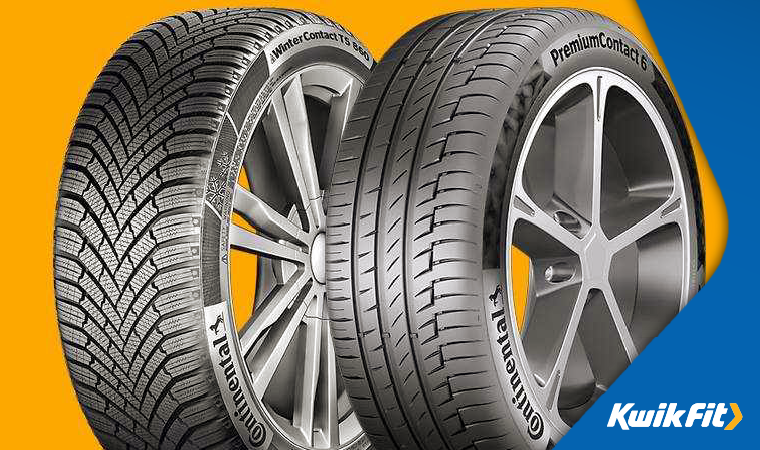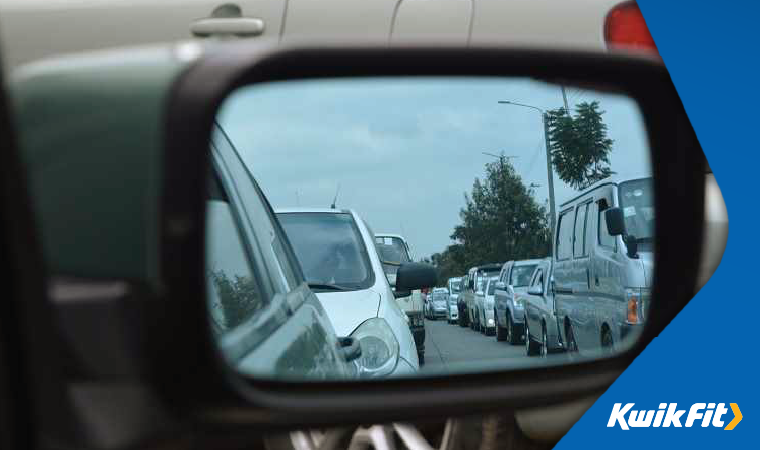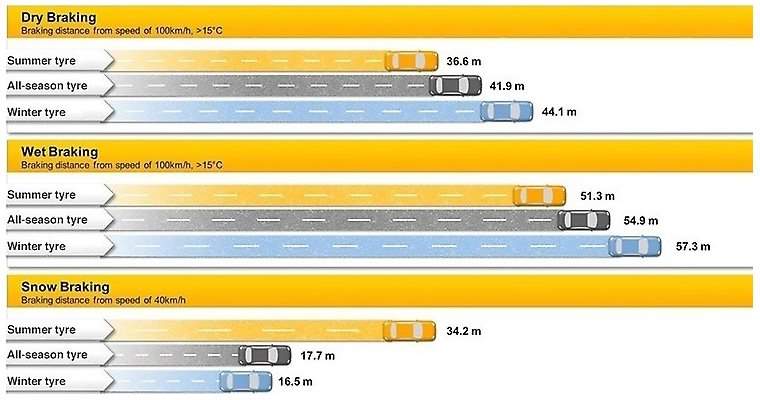Choosing the Right Time to Change Back to Summer Tyres
Jack Dreyer | Monday 5th February 2024 3:00pm

Did you know that there are different tyres designed for different seasons? Not many British drivers do, but, interestingly, it’s common knowledge in most northern European countries. Changing your tyres seasonally is not only important for safety, it helps improve driving performance too.
So, when’s the right time to change your winter tyres back to summer tyres?
In this article, we’ll explain the difference between winter and summer tyres, how to identify which type of tyres you have, and when’s the right time to make the switch - if you’re going to.
Read on to find out more.
What’s the difference between winter and summer tyres?
In brief, the principle difference between winter and summer tyres is that they are constructed from completely different rubber compounds. Summer tyres, like the ContiPremiumContact 5 and SportContact 6, offer optimal grip on warm roads, and – yes, that’s right – winter tyres are better when it comes to gripping cold ones.
The easiest way to spot a winter tyre is by looking at the tread pattern. Winter tyres feature ‘sipes’, additional smaller tread grooves on the surface of the tyre that help to bite into snow and ice. Note the difference between the winter tyre on the left and the summer tyre on the right.

At this point, we should point out that winter tyres – which perform much better in snowy and icy conditions – are not snow tyres. It’s not the main reason for driving on them. If you think about it, snow is not the primary reason why millions of drivers across northern Europe switch to winter tyres. And though it’s true that our European cousins do typically get more of it than us in the UK, it doesn’t snow non-stop during the winter months in Belgium or Germany. They switch simply because winter tyres perform at their best at 7°C and below, and work much better than summer tyres when the temperature has dropped.
Given the recent cold, snowy and icy weather conditions we’ve experienced in the UK, fitting tyres that perform better at below 7°C is certainly something we can all appreciate. As such, you could say that a more accurate name for “winter tyres” should be “cold weather tyres”.

Surviving the dark, cold winter
Winters in the UK have undoubtedly got colder in recent years. With these changes come more adverse weather conditions, including storms, ice and snow, leading to travel disruptions.
But, even with spring approaching, a word of warning for changing your tyres - timing is crucial. You don’t want to make the switch until it’s conclusive that the weather has definitely changed, and warmer climates are upon us.
We all know from experience that a sudden, unexpected late cold snap can easily occur in the UK, and if this happens you may find that you’ve switched tyres prematurely. When the temperature consistently gets to 7°C or below, it’s a good idea to have winter tyres fitted on your car. Conversely, as spring approaches and temperatures start to rise above 7°C, switching back to summer tyres from winter tyres should be top of the list.
Typically, barring any unforeseen sudden cold blast, the time to switch is normally at the end of March or beginning of April, depending on where in Britain you are.
What happens if you get the switch wrong?
If, after a burst of enthusiastic warm weather, you switch back to summer tyres too soon, your tyres won’t be in the optimum condition to provide you with maximum safety. This is because the rubber compounds that your summer tyres are constructed with will be less flexible, and, as a result, not key into the road surface very well compared to winter tyres.
And if you leave the switch too late, you’ll have to deal with another kind of issue. Winter tyres are specifically designed to warm up faster, so as to provide the most effective performance in colder conditions. However, in warmer weather this very same characteristic has a negative impact on several important aspects of how your tyres perform, including their braking performance, handling attributes, tyre wear rate, and fuel efficiency.

Tyre storage and “tyre hotels”
So you’ve had the good sense to own a separate set of summer and winter tyres, but what exactly do you do with the ones you’re not using for six months at a time? Most homes in northern Europe are built with underground garaging, so storage isn’t a problem. But if you live in a UK city, you’re not likely to have this option - so what can you do?
Kwik Fit can store your spare set for just £22 per tyre at our national distribution centre (that’s just £80 for a set of four). We’ll store the tyres for up to six months, and then contact you when the time is right to swap tyres. You can then decide whether to put your swapped tyres back into storage, or take them away with you. Already using our Tyre Hotel? We’ll be in touch soon to arrange your switch.
Ask the experts
If you have any questions you’d like to ask about switching tyres, or storing your spare set at our “tyre hotel”, get in touch with your local Kwik Fit tyre professionals. They’ll provide you with impartial advice, expert fitting solutions, and tyre storage options. You can find your local Kwik Fit centre here.
Any facts, figures and prices shown in our blog articles are correct at time of publication.
Featured Articles
Is it Illegal to Drive With One Headlight?
Saturday 19th July 2025
Wondering if it’s illegal to drive with one headlight? Learn about the safety risks and penalties of illegal blown bulbs and why you should fix them promptly.
Air Con in EVs & Hybrids: Experts Answer Your Questions
Monday 30th June 2025
Does air con drain EV batteries? Can you use the air con while charging an electric car? Find out the answers to these questions & more from Kwik Fit’s experts.
Why Is Your Car Making a Noise? Fixes & Tips
Friday 13th June 2025
When your car starts making unexpected noises, it can certainly be quite disconcerting; it may be nothing to worry about, but here’s what you need to know.









